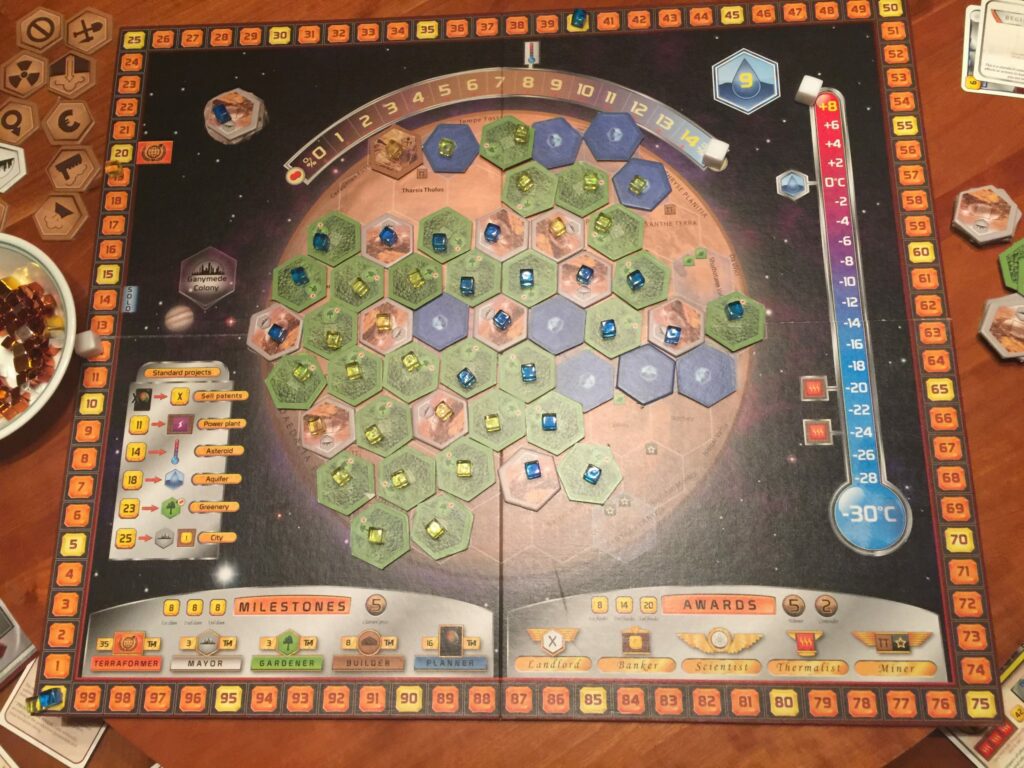Terraforming Mars is a board game from 1 to 5 players in which the players take the role of corporations whose role is to terraform and populate the planet Mars to make it suitable for human life. For that, they have to modify the temperature, oxygen and water levels present in the planet, but they can also gain additional points creating cities and spreading life.

The game is a competitive resource management game, with a focus on taking the most cost-efficient strategies to terraform through multitude of project cards. Boycott against other players progress (like destroying their plants with a meteorite so they cannot create more forests) is present but relatively secondary. As terraforming is a common objective there can be some experience of collaborative process, but game mechanics are clearly competitive.
The topic of terraforming has a long-standing tradition on sci-fi, and the possibility of humanity moving to Mars following the ecological destruction of the planet Earth is also a common topic. The narrative of the game expressed in the handbook does not suggest this is the case (the terraforming project is explained as an issue of over-population centuries ahead of our time) but the general topic may reflect these narratives.
The game is based on scientific data provided by its creator, the chemist Jacob Fryxelius.
References:
Pak, Chris, “Introduction – Terraforming: Engineering Imaginary Environments” Terraforming: Ecopolitical Transformations and Environmentalism in Science Fiction. Liverpool: Liverpool University Press, pp. 1-17, 2016.

